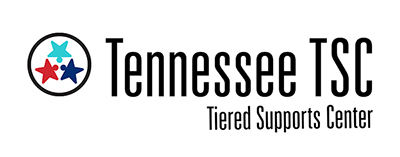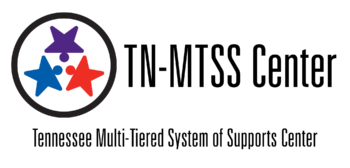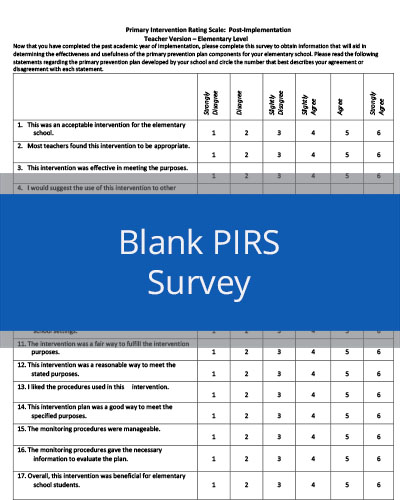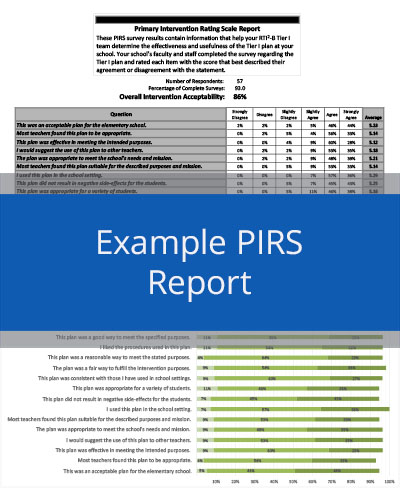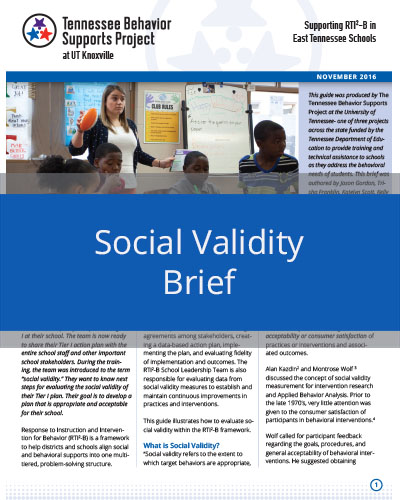 The TN-MTSS Center provides training and support to improve district and school capacity to implement an integrated model of a multi-tiered system of supports. Our work centers around strengthening the essential components of this framework: screening, progress monitoring, a multi-level prevention and intervention system, and data-based decision making.
The TN-MTSS Center provides training and support to improve district and school capacity to implement an integrated model of a multi-tiered system of supports. Our work centers around strengthening the essential components of this framework: screening, progress monitoring, a multi-level prevention and intervention system, and data-based decision making.
Data-based decision making occurs at all levels of implementation. Teams use implementation data, such as the TFI, to evaluate the extent to which their assessments, interventions, and supports have been implemented as intended and identify areas of improvement.
As your team completes the TFI this year, here are five ways to get the most out of your fidelity data:
1. Use the Action Planning Form
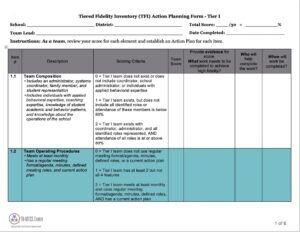 Save your team some frustration by keeping notes while completing the TFI. Use the Action Planning Form to document the scores you entered into PBIS Assessments along with a few notes on why that score was given. For example, if given a “0”, document what items the team needs to strengthen. When you go to review your data, you won’t be struggling to remember why a specific score was given. There is an Action Planning Form for Tier I, Tier II, and Tier III.
Save your team some frustration by keeping notes while completing the TFI. Use the Action Planning Form to document the scores you entered into PBIS Assessments along with a few notes on why that score was given. For example, if given a “0”, document what items the team needs to strengthen. When you go to review your data, you won’t be struggling to remember why a specific score was given. There is an Action Planning Form for Tier I, Tier II, and Tier III.
2. Use Your Reports
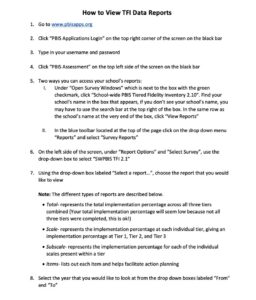 Log in to PBIS Assessments and access your Subscale Report. Identify subscales with the highest scores as your areas of success and subscales with the lowest scores as your areas to grow. These areas can then be cross-referenced with your Action Planning Form. For example, if within Tier I your Evaluation Subscale score is the lowest, identify the corresponding items on the Item Report. Were these areas you identified on the Action Planning Form as needing to be strengthened? Not sure how to access your reports? Click here for step-by-step directions.
Log in to PBIS Assessments and access your Subscale Report. Identify subscales with the highest scores as your areas of success and subscales with the lowest scores as your areas to grow. These areas can then be cross-referenced with your Action Planning Form. For example, if within Tier I your Evaluation Subscale score is the lowest, identify the corresponding items on the Item Report. Were these areas you identified on the Action Planning Form as needing to be strengthened? Not sure how to access your reports? Click here for step-by-step directions.
3. Select Three Focus Areas
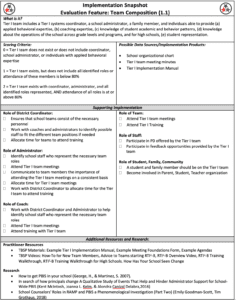 We do not expect you to tackle every item on the TFI with a score lower than 2. Identify three items from your Action Planning Form or a selected Subscale to focus on. From here, create a “to–do” list on how you will make changes to your current plan. What are you going to change? How will you do this? Who is responsible? When will it be done? If you need suggestions on a specific Tier I TFI item, refer to the TFI Tier I Implementation Snapshots. These include a description of each feature along with research and resources for more information.
We do not expect you to tackle every item on the TFI with a score lower than 2. Identify three items from your Action Planning Form or a selected Subscale to focus on. From here, create a “to–do” list on how you will make changes to your current plan. What are you going to change? How will you do this? Who is responsible? When will it be done? If you need suggestions on a specific Tier I TFI item, refer to the TFI Tier I Implementation Snapshots. These include a description of each feature along with research and resources for more information.
4. Take it to the Next Level
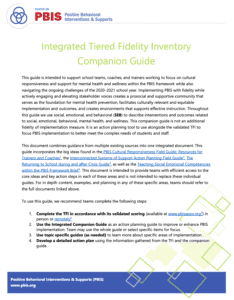 Is your team interested in health and well-being? Take your TFI to the next level with the Integrated TFI Companion Guide. This guide, used in conjunction with the TFI, supports schools by focusing on cultural responsiveness and wellness support.
Is your team interested in health and well-being? Take your TFI to the next level with the Integrated TFI Companion Guide. This guide, used in conjunction with the TFI, supports schools by focusing on cultural responsiveness and wellness support.
5. Share Your Data
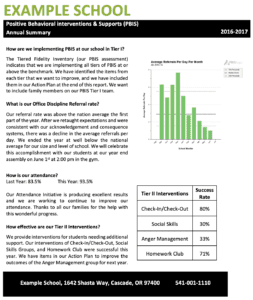 After your team completes the TFI, be sure to share your progress with staff. It is important they understand how your team plans to make improvements and can celebrate areas of growth! They are critical to implementing your school-wide plan, so they should be informed of this process. This example data summary shows how your team can share TFI data with your school.
After your team completes the TFI, be sure to share your progress with staff. It is important they understand how your team plans to make improvements and can celebrate areas of growth! They are critical to implementing your school-wide plan, so they should be informed of this process. This example data summary shows how your team can share TFI data with your school.
School teams should complete the TFI every fall for the tier(s) that are being targeted and each spring for all tiers in which their school has received training. Using TFI data for decision making helps teams develop and enhance school-based non-academic supports (e.g., social, emotional, and behavioral) while establishing a safe and welcoming school environment that optimizes learning opportunities and prioritizes high-quality instruction. For more information on enhancing academics visit Tennessee Department of Education’s Response to Intervention Framework Manual.
